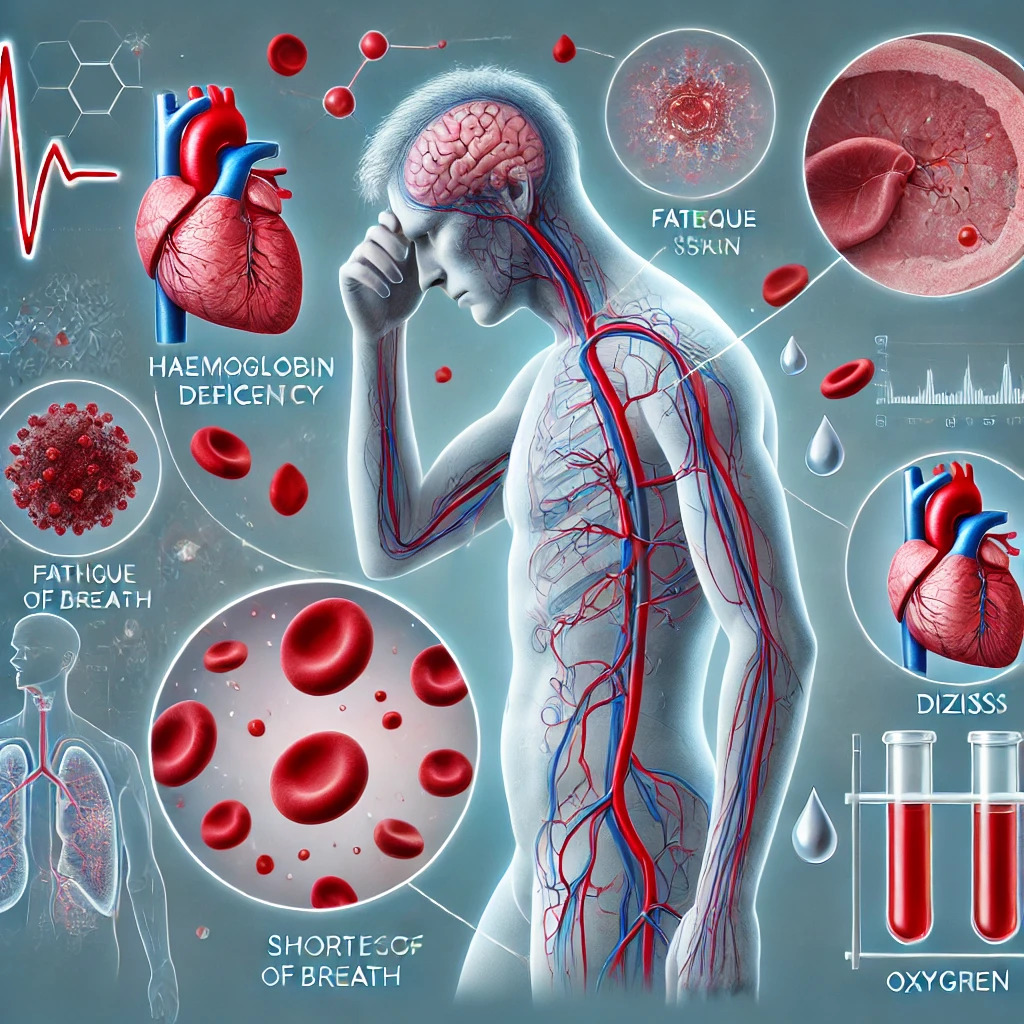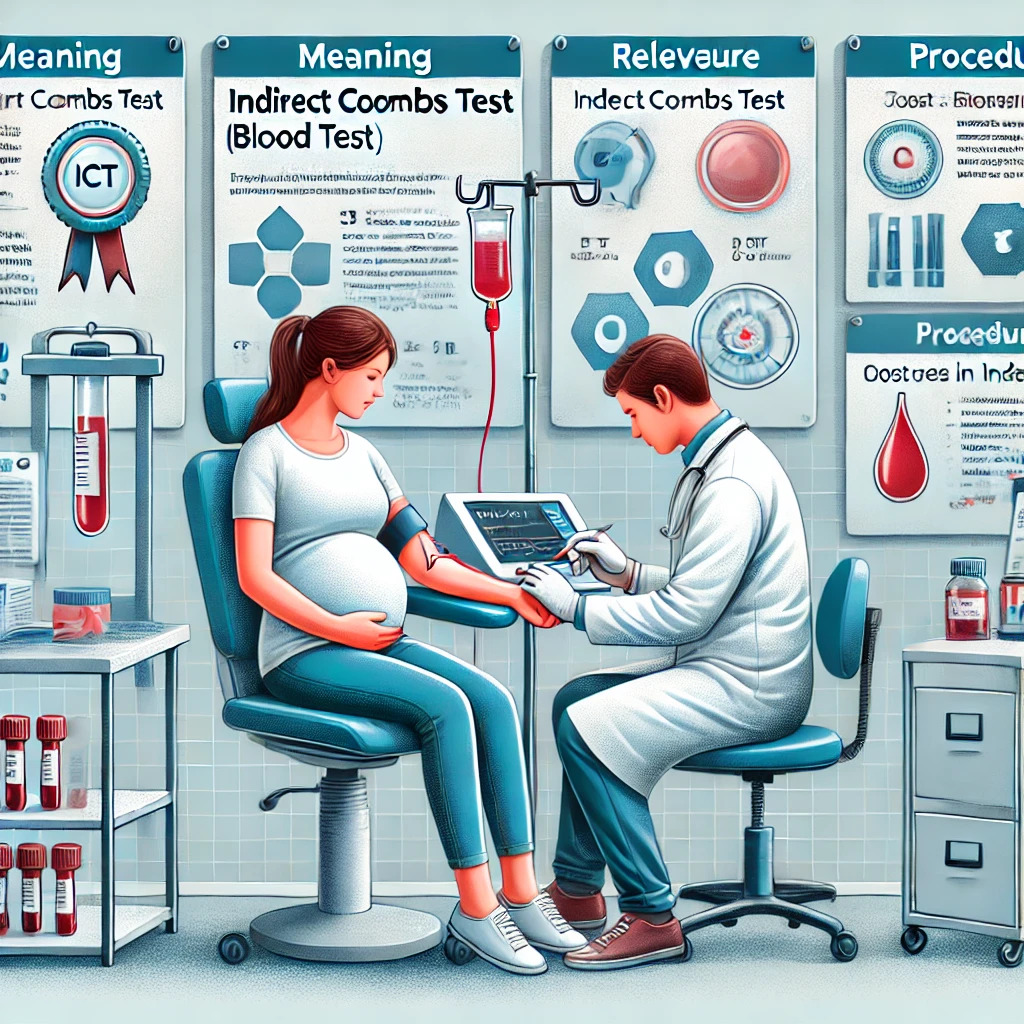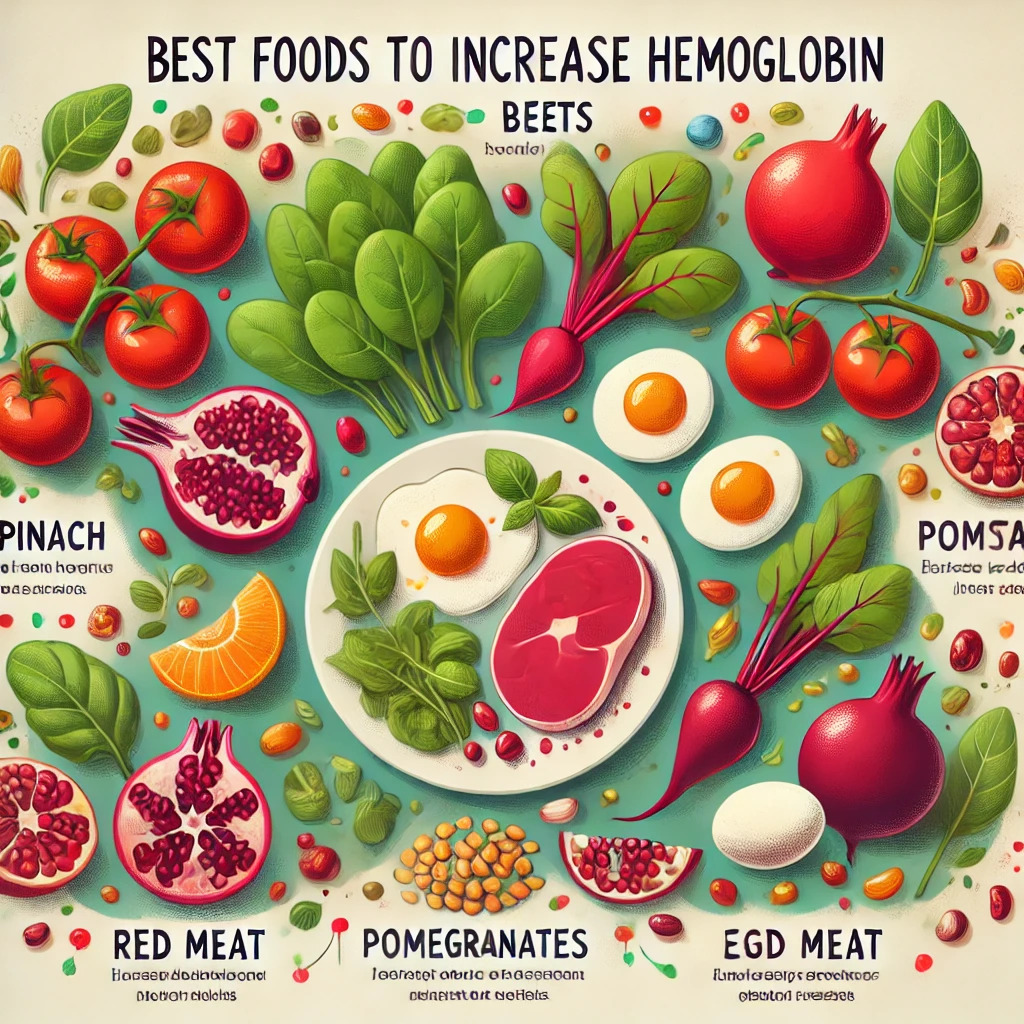Food To Increase Hemoglobin For Diabetic Patients

The term hemoglobin often refers to the protein in our red blood cells responsible for carrying oxygen. Hemoglobin levels can drop low due to different causes and may be a symptom of anemia or other conditions. It is essential to know the various ways and foods to increase hemoglobin for diabetic patients because there is a connection between anemia and diabetes.
In this blog, you will understand the relationship between low hemoglobin and diabetes, different causes of low hemoglobin, non-veg and veg foods to increase hemoglobin for diabetic patients, tests you may need, and other things that can be done.
Relationship between hemoglobin, anemia, and diabetes
Hemoglobin is a protein responsible for carrying oxygen to different body parts, which helps provide energy to the cells for their functions. Anemia is a lack of healthy red blood cells that causes reduced oxygen supply in different body parts. Anemia can have many causes, but in most cases, the hemoglobin level tends to be lower than usual. If someone has anemia, there will be a lower number of red blood cells or a lower hemoglobin concentration in the red blood cells. In both cases, less oxygen is supplied to the cells. Due to this, organs and tissues don't function properly, and the person suffers from fatigue, amongst other symptoms.
For clarification, anemia does not cause diabetes, and diabetes does not cause anemia. There is a relationship between these two conditions, though.
Also Read: - Blood increasing foods list
These are some ways these two conditions are related and may present together in some people:
- People with chronic kidney disease tend to have anemia because when the kidneys don't function well, they don't produce erythropoietin. This hormone triggers the body to produce more red blood cells.
- Chronic inflammation is one of the critical factors in many metabolic diseases. In diabetic patients, there may be inflammation in the blood vessels. So, even if the erythropoietin is produced, the signal may not reach the bone marrow.
- Certain diabetic medications can also lead to low hemoglobin levels after prolonged use. Prolonged use of metformin can cause a deficiency of vitamin B12 (which is essential for healthy red blood cells). Other medicines like fibrates and ACE inhibitors can also, though less frequently, cause low hemoglobin levels.
- Low hemoglobin levels or anemia can worsen kidney health and cause more complications in diabetic patients.
- Notably, anemia can lead to false high blood sugar levels and increased HbA1c numbers.
As you can understand from the above factors, it is essential to treat anemia. Knowing about the causes of low hemoglobin and learning about foods that increase hemoglobin in diabetic patients can help you prevent anemia-related complications, whether you are diabetic or non-diabetic.
Causes: why some people have low hemoglobin and anemia
Several factors can lead to low hemoglobin. Before we explore the foods that increase hemoglobin for diabetic patients, let us learn about the causes of low hemoglobin:
- Physiological changes during pregnancy
- Deficiency of iron
- Vitamin B12 or folate deficiency
- Significant blood loss due to any reason like accidents, injuries, heavy bleeding in periods, etc
- Cancers that affect the bone marrow, e.g., leukemia
- Kidney disease
- Liver disease
- Thalassemia
- Thyroid disorders like hypothyroidism
- Sickle cell anemia and some other genetic disorders
- Long-term alcohol intake
- Autoimmune diseases like lupus, rheumatoid arthritis
- Inflammatory bowel disease, e.g., Crohn's disease, ulcerative colitis
- Aplastic anemia
- Exposure to toxins like lead
- Prolonged use of certain medications
- Chemotherapy and radiotherapy
Anemia can result from decreased production of red blood cells, creased red cell destruction/loss, or both.
Also Read: - Danger level of sgpt and sgot
Symptoms of low hemoglobin and anemia
Most of the symptoms in anemic individuals result from less oxygen supply to organs and tissues.
Some of the symptoms are:
- Fatigue
- Feeling weak
- Lightheadedness or dizziness, especially when getting up or engaging in physical activities
- Frequent headaches
- Shortness of breath
- Pale skin, gums, or nails
- Cold extremities
- Palpitations
- Chest pain
- Fainting
The above are general symptoms of anemia. Some symptoms are associated with particular types of anemia. These are:
- Brittle nails
- Inflamed tongue
- Cracks at the side of the mouth
- Heart murmur
- Enlarged spleen
- Enlarged liver
- Jaundice
- Problem in concentrating
- Unusual cravings
All types of anemia need to be investigated and treated promptly. This is why medical attention and blood tests are essential for low hemoglobin symptoms.
Food to increase hemoglobin for diabetic patients- which nutrients are essential?
Hemoglobin is a vital protein found in red blood cells, and its normal levels are essential for overall health because it has a crucial role in oxygen transport in our body.
Many non-vegetarian and vegetarian foods increase hemoglobin in diabetic patients and for everyone else. If the root cause is related to dietary factors, taking these foods into your diet with or without supplements will help correct the hemoglobin levels. However, if there are other factors, it is essential to treat the root cause, as food alone won't be able to fix the problem.
Before examining how to increase hemoglobin in diabetic patients with a correct diet, let us look at the essential nutrients instrumental in supporting healthy hemoglobin/hemoglobin levels. These nutrients are:
- Iron- it is the most critical nutrient required for hemoglobin production. It is necessary for binding oxygen and forms the core of hemoglobin molecules.
- Vitamin B12 is essential for red blood cell production. If one is deficient in vitamin B12, immature red blood cells may be seen, which will contain less hemoglobin.
- Folate- also called vitamin B9, works with vitamin B12 for red blood cell production.
- Vitamin C is essential for raising hemoglobin levels because it increases iron absorption in the digestive tract.
- Vitamin B6 is a vital vitamin that plays a role in producing red blood cells, which are found in many foods.
- Copper- aids in the absorption and utilization of iron, thus playing an essential role in raising hemoglobin levels.
Diabetic patients must plan their diet carefully. So many healthy foods can be incthatated to get sufficient iron and vitamin B12, which will not spike their sugar levels. These foods can be paired with foods rich in vitamin C. A high-fibre diet with healthy food choices and monitoring portion sizes is essential.
Veg foods to increase hemoglobin for diabetic patients
Foods rich in iron
- Leafy greens like spinach, chaplain leaves, drumstick leaves, beet greens, methi leaves, drumstick leaves, and mustard greens.
- Legumes are a good source of iron, protein, fiber, and several B vitamins, making them an ideal choice for people with diabetes who want to increase their hemoglobin levels. You can include lentils, chickpeas, soybeans, tofu, peas, and beans from this food group.
- Nuts and seeds include pumpkin, sunflower, sesame, cashews, and almonds.
- Whole grains and fortified cereals.
- Dried fruits like raisins, prunes, apricots, and figs can provide little iron but also contain folic acid.
- Vegetables like potatoes with skin, broccoli, and Brussels sprouts.
- She fortified plant-based milks and breads.
Food rich in Vitamin B12 to support and increase hemoglobin levels
- Vegetarian sources are:
- Dairy products like cheese, milk, curd, and yogurt
- Fortified breakfast cereals
- Fortified plant-based milk
- Fortified nutritional yeast
- Fortified meat substitutes like soy-based products.
Vegans need supplements and fortified foods to meet their B12 requirements.
- Non-vegetarian foods are the primary sources of Vitamin B12. These include:
- Fish and seafood like salmon, tuna, trout, clams, and sardines
- Meat like beef, chicken, lamb.
- Eggs where B12 is primarily found in the yolk
Non-vegetarian foods that increase hemoglobin levels
- Red meat and poultry provide reasonable amounts of iron that is easy to absorb. Beef, lamb, chicken, turkey, pork, etc, can be included in the diet. The liverThe liver contains a very high concentration of iron, primarily heme iron, which is absorbed better.
- Seafood like clams, oysters, mussels, shrimp, sardines, tuna
- Egg yolks also have some amount of iron.
Foods rich in folate
Leafy greens; legumes; fruits like oranges, avocados, papaya; fortified foods; vegetables like broccoli, asparagus, etc.
Foods rich in B6
Poultry; fish like salmon and tuna; vegetables such as potatoes, sweet potatoes, and spinach; fruits like bananas and avocados; legumes, nuts, and seeds.
Foods that provide vitamin C to raise hemoglobin levels
Citrus fruits include oranges, lemons, kiwi, and guavas; berries; bell peppers, kale, broccoli, potatoes, Brussels sprouts; fresh tomatoes; Indian gooseberry, etc.
Food that provides copper
Seafoods, nuts and seeds, legumes, whole grains, dark chocolate, and organ meats are good sources to include in the diet for copper.
As you can see, many of these food sources contain more than one nutrient, which helps improve hemoglobin levels. These foods can increase hemoglobin levels in diabetics when the root cause is also treated.
Which tests may be needed?
Several diagnostic tests are needed for anemia and low hemoglobin levels. Some tests which may be ordered are:
Tests which are ordered more commonly-
- Complete blood count measures the level of hemoglobin, number of red blood cells, size of red blood cells, and other cells.
- Reticulocyte count- this test is prescribed to measure the levels of immature red blood cells.
- Serum iron levels will tell about the total amount of iron in the blood.
- Ferritin test- This is used to analyze iron stores in the body.
- Vitamin B12 test
- Folic acid test
Advanced tests that may be needed-
- Coombs test- if auto-antibodies destroy red blood cells in the body, this test will show their presence.
- Fecal occult blood test- it will show the presence of blood in the stool but cannot be used to determine where it is coming from in the gastrointestinal tract. Further tests are needed.
- A bone marrow test checks if the bone marrow functions appropriately.
Conclusion
Low hemoglobin and diabetes are closely related conditions and also alarming even when they present alone. Low hemoglobin does not cause diabetes, and diabetes does not directly lead to low hemoglobin levels.
Diabetes-related complications, prolonged use of certain medications, and inflamed blood vessels can be the factors for low hemoglobin, especially when other factors are also present. On the other hand, anemia can cause some challenges when dealing with diabetes as it can impact kidney health and other organs, which can worsen the complications of diabetes. It can also lead to high HbA1c levels and falsely elevated blood sugar levels. This can lead to over-treating the high sugar levels, resulting in hypoglycemia.
The above information helps one to understand the relationship. Anemia or low hemoglobin levels can be treated with supplements, certain foods, changing medicines, and other interventions. Managing diabetes is also accessible by being vigilant about your health, making necessary lifestyle changes, taking medication-prescribed drugs, and getting regular checkups.
Whether you have an existing condition or have risk factors for anemia or diabetes, it is essential to get blood tests like CBC, which includes hemoglobin, HbA1c, fasting blood sugar, random blood sugar, iron study, and other tests. You may also need urine tests. Contact us at O-Lab in Jammu for comprehensive packages or individual blood tests at reasonable prices. You can also request a sample collection at home.





